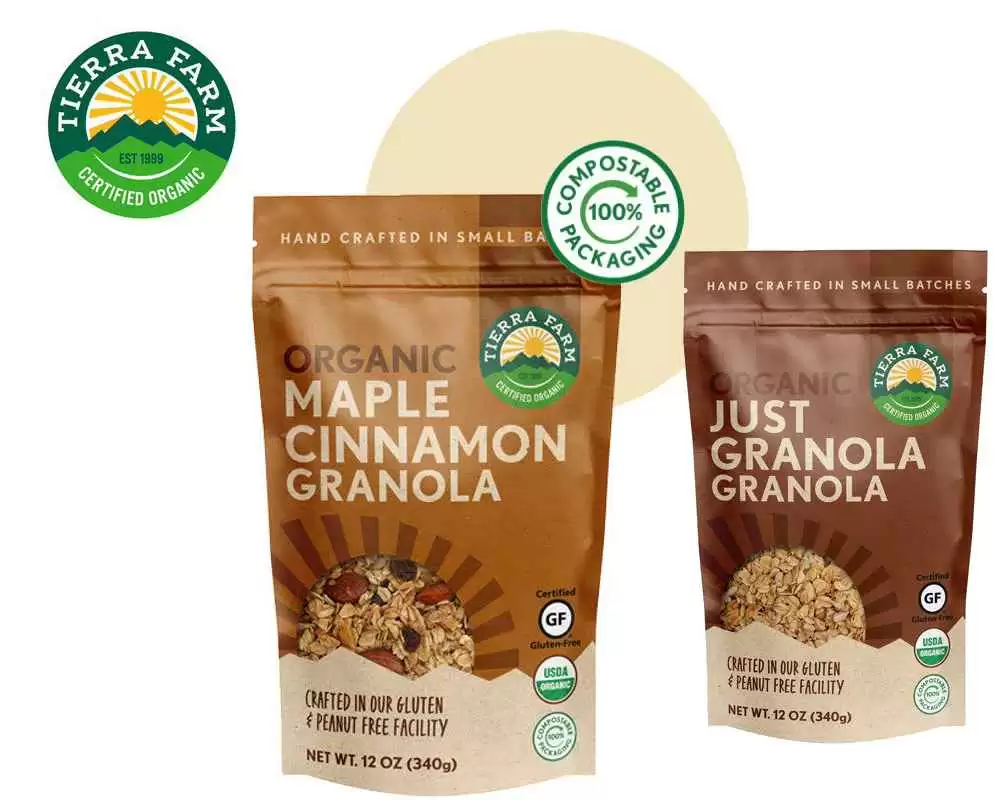Celiac.com 04/29/2024 – Getting enough calcium in the diet is essential for people of all ages, as this mineral performs many important functions in the body. In addition to bone health, calcium is required for muscle contractions, nerve impulses, normal blood clotting and regulating blood pressure. It may also offer protection from colon cancer.
Children and adults with celiac disease need to pay particular attention to calcium and other nutrients as many already have or will develop early bone disease such as osteopenia or osteoporosis. Osteopenia is low bone mineral density and osteoporosis is characterized by a significant decrease in bone mass resulting in brittle, easily broken bones. The hip, spine and wrist are most susceptible to fracture. Early diagnosis and treatment of celiac disease is critical for the prevention of bone disease. To maintain good bone health it is important that all people with celiac disease have routine bone density tests done to assess their overall bone health, and to follow the tips outlined below.
Follow a strict gluten-free diet
Healthy villi will result in normal absorption of nutrients.
Meet your daily calcium requirements
Table 1: Dietary Reference Intake for Calcium
/* DivTable.com */
.divTable{
display: table;
width: 100{5676e3b156b07d12bd9df9fe13d641a85da396026abde11a1ff2d0afc1b3c015};
}
.divTableRow {
display: table-row;
}
.divTableHeading {
background-color: #EEE;
display: table-header-group;
}
.divTableCell, .divTableHead {
border: 1px solid #999999;
display: table-cell;
padding: 3px 10px;
}
.divTableHeading {
background-color: #EEE;
display: table-header-group;
font-weight: bold;
}
.divTableFoot {
background-color: #EEE;
display: table-footer-group;
font-weight: bold;
}
.divTableBody {
display: table-row-group;
}
Age
Calcium (mg/day)
Infants
0- 6 months
7-12 months
210
270
Children
1-3 years
4-8 years
500
800
Females and Males
9-13
14-18
19-30
31-50
51-70
71 +
1300
1300
1000
1000
1200
1200
Choose calcium-rich foods
See Table 2 for a list of gluten-free foods. Remember that not all calcium sources are created equal. Milk (fl uid, powdered or evaporated) and milk products such as cheese and yogurt contain the most readily available source of calcium. Other foods such as salmon and sardines with the bones, calcium-fortifi ed beverages (soy, rice and orange juice), tofu made with calcium sulfate and vegetables (broccoli, collards, kale, mustard greens, turnip greens and bok choy) also contain calcium that is easily absorbed by the body. However, the calcium found in almonds, sesame seeds, dried beans and spinach are absorbed less effi ciently because these foods contain calcium-binding substances called oxalates. Although the calcium content of these foods should not be counted as part of your daily calcium intake; they do provide many other nutrients important for good health.
Table 2 Calcium Content of Gluten-Free Dairy Foods
/* DivTable.com */
.divTable{
display: table;
width: 100{5676e3b156b07d12bd9df9fe13d641a85da396026abde11a1ff2d0afc1b3c015};
}
.divTableRow {
display: table-row;
}
.divTableHeading {
background-color: #EEE;
display: table-header-group;
}
.divTableCell, .divTableHead {
border: 1px solid #999999;
display: table-cell;
padding: 3px 10px;
}
.divTableHeading {
background-color: #EEE;
display: table-header-group;
font-weight: bold;
}
.divTableFoot {
background-color: #EEE;
display: table-footer-group;
font-weight: bold;
}
.divTableBody {
display: table-row-group;
}
Food
Serving
Calcium (mg)
Buttermilk
1 cup (250 ml)
303
Cheddar cheese
2 oz. (50 g)
350
Cottage cheese, creamed
½ cup (125 ml)
76
Feta cheese
2 oz (50 g)
255
Ice cream
½ cup (125 ml)
90
Milk (whole, 2{5676e3b156b07d12bd9df9fe13d641a85da396026abde11a1ff2d0afc1b3c015}, 1{5676e3b156b07d12bd9df9fe13d641a85da396026abde11a1ff2d0afc1b3c015}, skim)
1 cup (250 ml)
315
Milk (chocolate)
1 cup (250 ml)
301
Milk, powder, dry
3 Tbsp. (45 ml)
308
Mozzarella cheese
2 oz (50 g)
287
Parmesan cheese, grated
3 Tbsp. (45 ml)
261
Processed cheese slices
2 regular (62 g)
384
Swiss cheese
2 oz (50 g)
480
Yogurt, fruit-flavored
¾ cup (175 g)
240
Yogurt, plain
¾ cup (175 g)
296
Table 2: Calcium Content of Other Gluten-Free Foods
/* DivTable.com */
.divTable{
display: table;
width: 100{5676e3b156b07d12bd9df9fe13d641a85da396026abde11a1ff2d0afc1b3c015};
}
.divTableRow {
display: table-row;
}
.divTableHeading {
background-color: #EEE;
display: table-header-group;
}
.divTableCell, .divTableHead {
border: 1px solid #999999;
display: table-cell;
padding: 3px 10px;
}
.divTableHeading {
background-color: #EEE;
display: table-header-group;
font-weight: bold;
}
.divTableFoot {
background-color: #EEE;
display: table-footer-group;
font-weight: bold;
}
.divTableBody {
display: table-row-group;
}
Food
Serving
Calcium (mg)
Almonds
½ cup (125 ml)
200*
Baked beans
1 cup (250 ml)
163*
Bok choy, cooked
½ cup (125 ml)
84
Broccoli, cooked
½ cup (125 ml)
38
Collards, cooked
½ cup (125 ml)
81
Orange juice, calcium fortified
1 cup (250 ml)
300-350
Salmon, sockeye, canned with bones
Half a 7.5 oz (213 g) can
243
Sardines, canned with bones
6 medium (72 g)
275
Sesame seeds
½ cup (125 ml)
89*
Soybeans, cooked
½ cup(125 ml)
93
Soy beverage, fortified
1 cup (250 ml)
312
Tofu, regular, processed with calcium sulfate**
1/3 cup (100 g)
150
* The calcium from these sources is absorbed less efficiently by the body.
** The calcium content of tofu is an approximation based on products available on the market. Calcium content can vary greatly from one brand to another and can be low. Tofu processed with magnesium chloride also contains less calcium.
Consider calcium supplementation
If you are unable to consume enough dietary calcium you many to need a gluten-free calcium supplement. Look for the amount of “elemental calcium” on the label. Your body can only absorb 500 mg at one time therefore it is best to divide your dose throughout the day. Calcium carbonate is more slowly absorbed and should be consumed with meals. Calcium citrate is well absorbed with meals or an empty stomach. Bone meal or dolomite calcium supplements are not recommended as some products have been found to contain lead and mercury.
Limit caffeine intake
Studies have shown that caffeine increases calcium loss through the urine. Most experts agree that 2-3 cups of coffee/day is probably not harmful provided that calcium intake is adequate, so limit your coffee and cola intake.
Limit sodium intake
Sodium also has been shown to increase the loss of calcium through the urine. Therefore it is advisable to limit your intake of processed foods, table salt and salt in cooking.
Get enough Vitamin D
Vitamin D helps the body use the calcium in food. It can increase calcium absorption by as much as 30-80 {5676e3b156b07d12bd9df9fe13d641a85da396026abde11a1ff2d0afc1b3c015}. See Table 3 for the Dietary Reference Intake for vitamin D. The easiest way to get vitamin D is from exposure to sunlight, which causes the body to make its own vitamin D. All you need is 15 minutes per day; however, aging significantly decreases 1) the ability of the skin to produce vitamin D and 2) kidney function that is involved in converting the inactive to active form of vitamin D. Also, sunscreen blocks the production of vitamin D in the skin. Another concern is that between the months of October and March in Canada and the northern USA, vitamin D synthesis in the skin is very limited. To make up for the lack of sunlight look for other sources of vitamin D listed in Table 4, and remember the points below.
Table 3: Dietary Reference Intake for Vitamin D
/* DivTable.com */
.divTable{
display: table;
width: 100{5676e3b156b07d12bd9df9fe13d641a85da396026abde11a1ff2d0afc1b3c015};
}
.divTableRow {
display: table-row;
}
.divTableHeading {
background-color: #EEE;
display: table-header-group;
}
.divTableCell, .divTableHead {
border: 1px solid #999999;
display: table-cell;
padding: 3px 10px;
}
.divTableHeading {
background-color: #EEE;
display: table-header-group;
font-weight: bold;
}
.divTableFoot {
background-color: #EEE;
display: table-footer-group;
font-weight: bold;
}
.divTableBody {
display: table-row-group;
}
Age
Vitamin D (IU)
Birth – 50 years
200
51- 70 years
400
Over 70 years
600
Milk is fortified with vitamin D but most other dairy products such as cheese, yogurt and ice cream are not fortified. Recently some companies have been adding vitamin D to other dairy products so be sure to read the ingredient label and nutrition panel.
Fatty fish (sardines, salmon and herring) and cod liver oil and halibut liver oil are high in vitamin D.
Many soy and rice beverages are fortified with vitamin D. Check the ingredient list carefully as some products may contain barley malt extract/flavoring and must be avoided.
Nut beverages (e.g. Blue Diamond Almond Breeze) and potato beverages (e.g. Vances DariFree) are fortified with vitamin D.
Multivitamin supplements usually contain 200-400 IU of vitamin D.
Some calcium supplements may contain vitamin D. Amounts vary so check the label.
Table 4: Sources of Vitamin D
/* DivTable.com */
.divTable{
display: table;
width: 100{5676e3b156b07d12bd9df9fe13d641a85da396026abde11a1ff2d0afc1b3c015};
}
.divTableRow {
display: table-row;
}
.divTableHeading {
background-color: #EEE;
display: table-header-group;
}
.divTableCell, .divTableHead {
border: 1px solid #999999;
display: table-cell;
padding: 3px 10px;
}
.divTableHeading {
background-color: #EEE;
display: table-header-group;
font-weight: bold;
}
.divTableFoot {
background-color: #EEE;
display: table-footer-group;
font-weight: bold;
}
.divTableBody {
display: table-row-group;
}
Food
Serving Size
Vitamin D (IU)
Cod liver oil
Cod liver oil capsule
1 tsp. (5 ml)
1 capsule
450
100
Halibut liver oil capsule
1 capsule
400
Sardines, canned
3.5 oz (100 g.)
300
Salmon, canned, with bones
3.5 oz (100 g.)
500
Egg
1 medium
25
Milk
1 cup (250 ml)
90
Soy Beverage (fortified)
1 cup (250 ml)
90
Don’t just sit there…get moving! Regular weight bearing exercises such as walking, stair climbing, dancing and tennis and muscle-strengthening exercises can reduce the risks of falls and fractures. Consult your doctor before beginning a vigorous exercise program.
So remember the ABC’s…All Bones Need Calcium, Vitamin D and Exercise!
Source link



